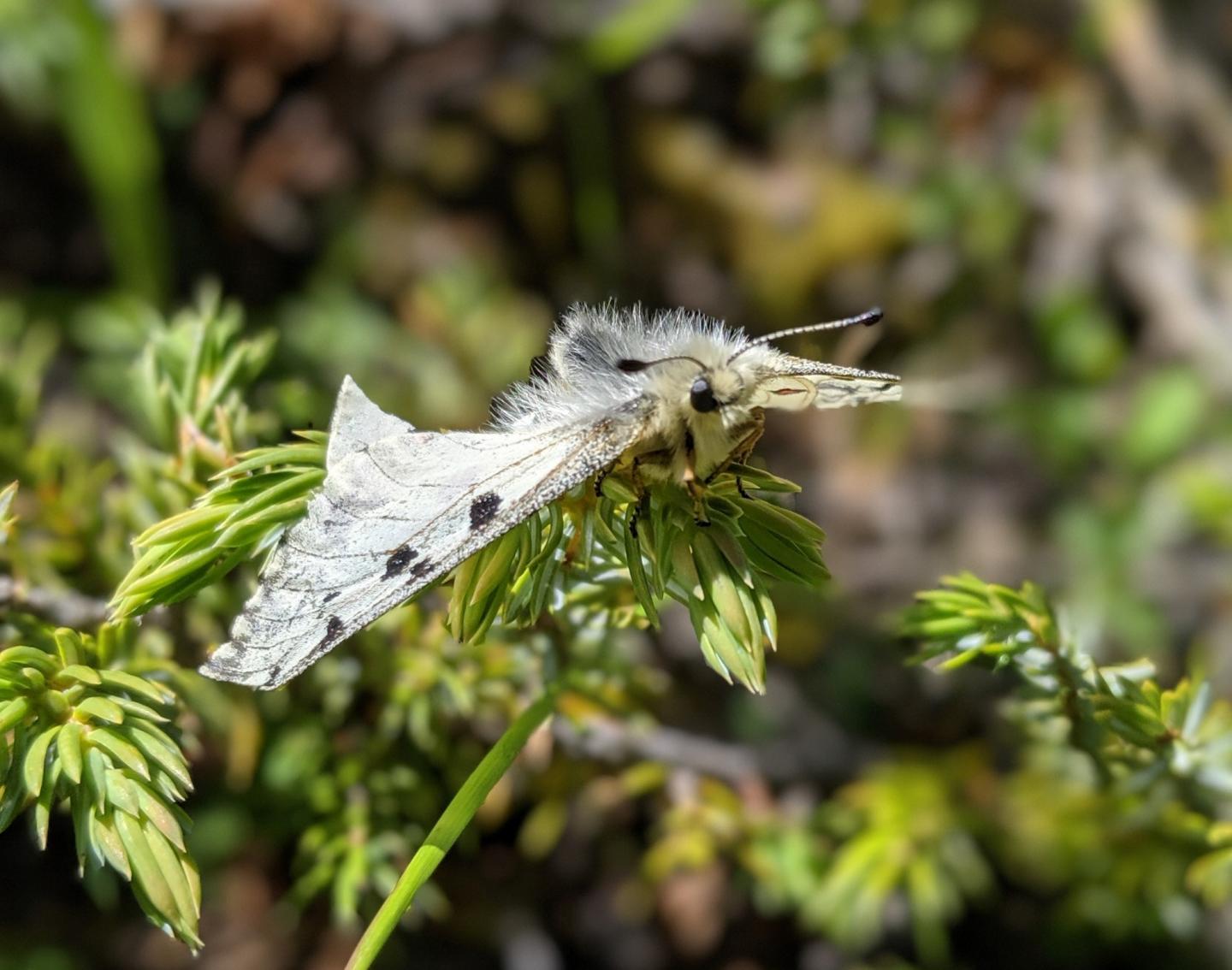Study examines downstream effects of climate change on alpine butterfly populations in North America

Credit: Alessandro Filazzola.
The long-term effects of climate change suggests that the butterfly effect is at work on butterflies in the alpine regions of North America, according to a new study by University of Alberta scientists–and the predictions don’t bode well.
“We often frame the effects of climate change directly onto a species as the future becoming either too hot, too dry, or too wet,” explained Alessandro Filazzola, postdoctoral fellow in the Faculty of Science Department of Biological Sciences and lead author on the study. “However, climate change can have indirect effects such as through the food resources of a species. These effects are more likely to affect butterflies, because as caterpillars they often feed on one or a few plant species.”
The researchers used climate change models to understand the effects of changing ecosystems on alpine butterflies in North America. The results show that alpine butterflies who have specialized diets, meaning that they feed on one or a few plants, are more vulnerable to climate change because of fluctuations in their food. On the other hand, butterflies that have diverse diets are less likely to be affected.
“The main outcome from this study is our improved ability to quantify the complex effects of climate change on ecosystems,” said Filazzola, who conducted this work under the supervision of Professors Jens Roland and JC Cahill. “Understanding the effects of climate change on a species through its food items is very important for biological conservation–climate change is likely going to have complex effects that extend beyond single species mortality.”
Models like the one used in this study provide a more holistic approach to understanding the way that a changing climate could affect entire ecosystems. “Using an approach that looks at the ecosystem level would improve our ability to mitigate biodiversity loss and maintain the delivery of ecosystem services such as pollination,” added Filazzola.
###
This research was conducted in collaboration with Stephen F. Matter, adjunct professor at UAlberta and faculty member at University of Cincinnati. Funding was provided by the Natural Sciences and Engineering Research Council of Canada (NSERC) and the Killam Trusts.
The paper, “Inclusion of trophic interactions increases the vulnerability of an alpine butterfly species to climate change,” was published in Global Change Biology (doi: 10.1111/gcb.15068).
Media Contact
Katie Willis
[email protected]
Original Source
https:/
Related Journal Article
http://dx.





